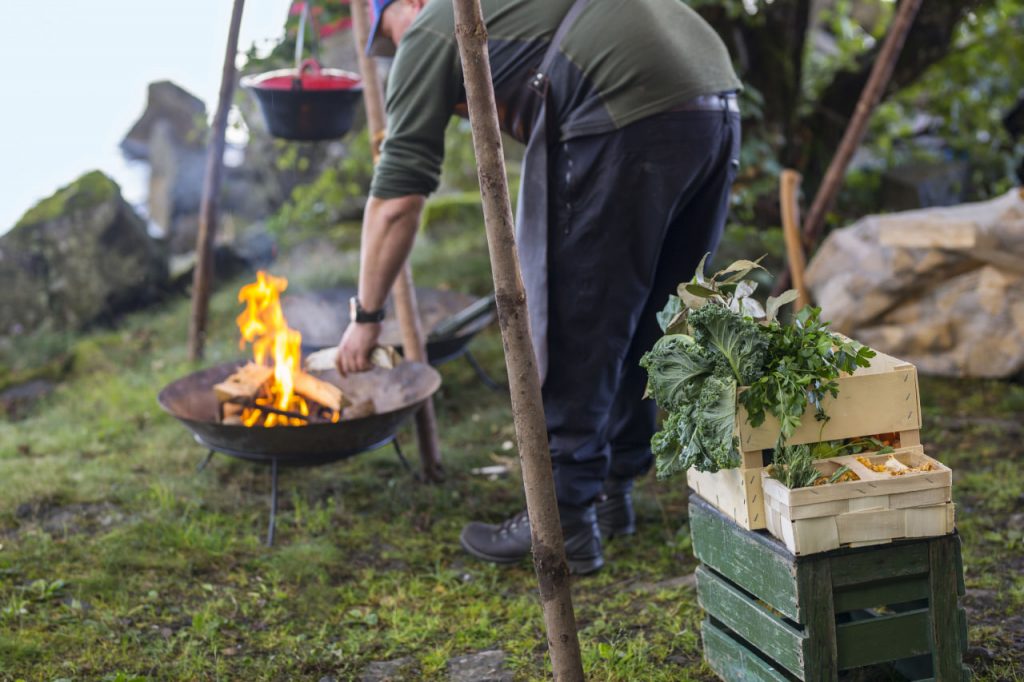Foraging for wild mushrooms can be a thrilling and highly rewarding experience for anyone interested in wild cooking. With thousands of mushroom species to choose from, the world of wild fungi offers an extensive array of flavors and textures, making them perfect for any culinary creation. In this article, we will dive into the basics of mushroom foraging, highlight some of the best edible species to seek out, and provide tips on how to safely harvest and prepare these flavorful ingredients.
Best Edible Wild Mushrooms:
- Chanterelles: Known for their distinctive golden color and trumpet-like shape, chanterelles are one of the most prized edible mushrooms. They have a delicate, fruity flavor that pairs wonderfully with creamy sauces, risottos, or simply sautéed with butter and herbs. Chanterelles grow in forests and are often found under hardwood trees, particularly oak and beech.
- Morels: Morels are another sought-after wild mushroom, celebrated for their distinctive honeycomb texture and rich, earthy flavor. Their versatility makes them ideal for a range of dishes, from soups and stews to gourmet sauces. However, morels must be cooked thoroughly before consumption, as they are toxic when raw.
- Porcini: Known for their meaty texture and deep, umami-rich flavor, porcini mushrooms are a staple in Italian cuisine. They are excellent in risottos, pasta dishes, or as a topping for pizza. Porcini are typically found in coniferous forests and are often foraged during late summer to early fall.
- Oyster Mushrooms: Oyster mushrooms are easy to identify with their fan-shaped caps and delicate, mild flavor. These mushrooms grow on decaying wood, especially on hardwood trees, and are available throughout the year. They are perfect for stir-fries, soups, and vegetable-based dishes.
- Lion’s Mane: Lion’s mane mushrooms are unique due to their long, white tendrils, resembling a lion’s mane. They are highly nutritious, often used in traditional medicine, and have a mild, slightly sweet flavor. Lion’s mane can be used in a variety of dishes, from sautéed to incorporated into sauces and soups.
Tips for Foraging Wild Mushrooms:
- Learn Mushroom Identification: Many wild mushrooms look similar to poisonous varieties, so it’s crucial to learn how to properly identify edible mushrooms. Investing in a good foraging guide and attending mushroom identification classes is a great way to ensure safety.
- Forage in the Right Places: Mushrooms grow in specific environments, usually in moist, shaded areas like forests or grassy meadows. Always look for mushrooms in areas with good air circulation and minimal pollution.
- Harvest Responsibly: Only take mushrooms that are abundant and in good condition. Leave behind mushrooms that are in their early stages of growth so they can mature and produce spores for future generations. Also, be mindful of local regulations regarding foraging to ensure you aren’t damaging protected ecosystems.
Cooking with Wild Mushrooms:
- Sautéing: One of the best ways to enjoy wild mushrooms is by sautéing them in butter with a sprinkle of salt and pepper. This simple preparation brings out the full depth of their flavor.
- Soups and Stews: Wild mushrooms are a wonderful addition to soups and stews. Their rich, earthy flavor adds complexity to broths, making them the perfect component of rustic, hearty dishes.
- Grilling or Roasting: Larger mushrooms, like portobellos or lion’s mane, can be grilled or roasted, making them a great alternative to meat in vegetarian or vegan dishes.
Safety Tips:
- Never Eat Raw Mushrooms: Many wild mushrooms contain toxins that can only be neutralized through cooking. Always cook wild mushrooms thoroughly before eating them.
- Avoid Picking Unknown Mushrooms: If you are unsure whether a mushroom is edible, do not pick it. Some edible mushrooms have poisonous look-alikes, and consuming wild mushrooms can be hazardous if you don’t have proper knowledge.
- Consult an Expert: If you’re new to foraging, it’s highly recommended to forage with an experienced mushroom hunter or to consult a local expert for advice and guidance.
Foraging for mushrooms is a fantastic way to connect with nature and explore the incredible flavors that the wild has to offer. Whether you’re cooking up a delicate chanterelle risotto or enjoying a warm bowl of mushroom soup, wild mushrooms can elevate your culinary creations with their unique textures and flavors.

